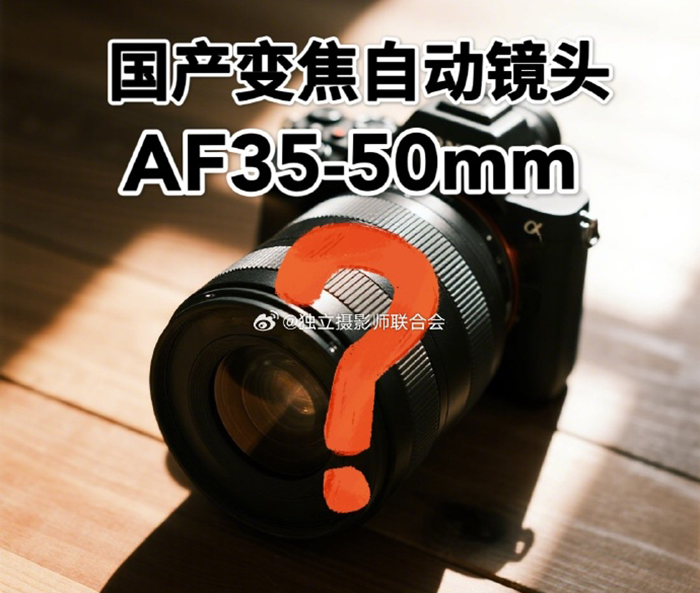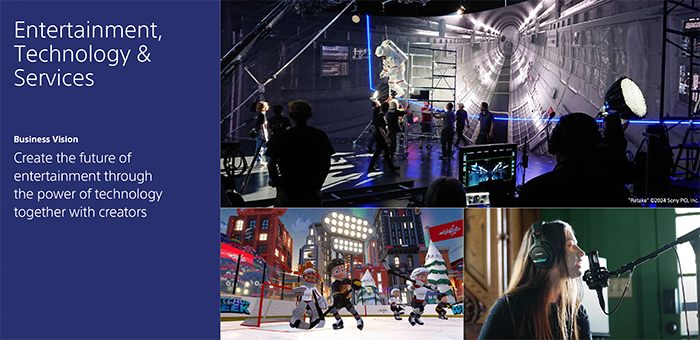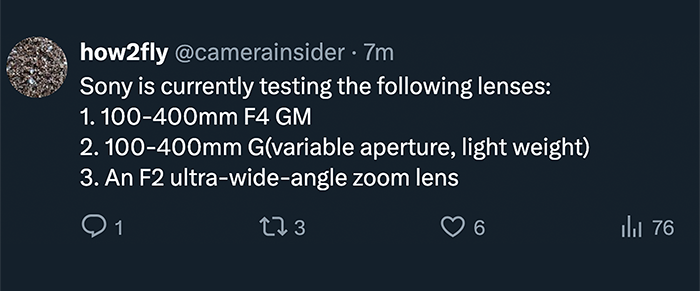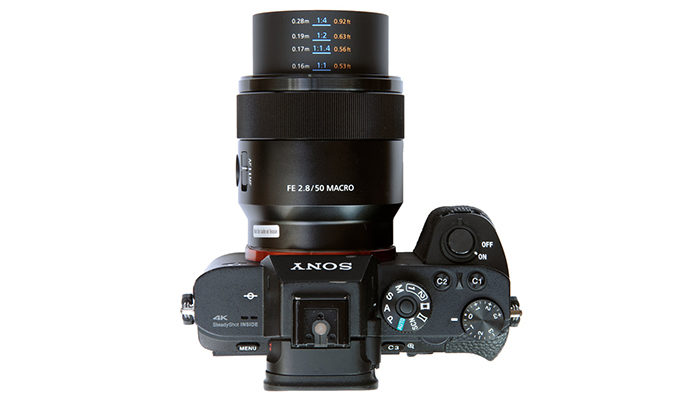An interesting “hint” about a possible Batis 135mm f/2.0 lens…
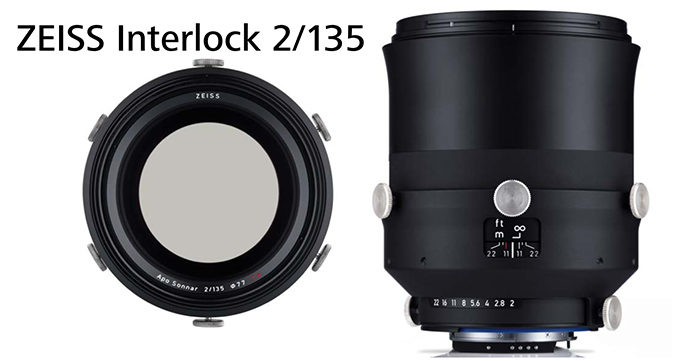
SAR reader P. sent me this:
This email is a bit weird haha, but I think I might have worked out what the next zeiss lenses might be for e-mount. If you look at this site, http://www.zeiss.de/corporate/de_de/zeiss-corporate-newsroom/news/pressemitteilungen.html?id=photokina-2016-new-industrial-lenses you can see four “interlock lenses”. ZEISS Interlock Compact: Planar T* 2/50, Sonnar T* 2.4/85, Distagon T* 2.8/21, Biogon T* 2/35. These are the aperture and focal lengths of the zeiss loxia lenses and they look like them too; the weights aren’t the same however. Then recently they announced a 15mm f/2.8, a 18mm f/2.8, and a 135mm f/2.
“New members have also been added to the ZEISS Interlock family of industrial lenses: ZEISS is expanding the series with three fixed focal lengths: 2.8/15, 2.8/18 and 2/135”. There’s already a zeiss batis 18mm f/2.8 lens, so my theory is that the 15mm f/2.8 is too close to the zeiss batis 18mm f/2.8, so that will be a Zeiss Loxia. Then the 135mm f/2 will be a Zeiss Batis (this makes more sense since the filter size will fit).
This makes quite a lot of sense, because you can have a 15mm, a 21mm, 35mm and an 85mm in the zeiss loxia line, then in the zeiss batis line you can have 18mm, 25mm, 85mm and 135mm. None of the focal lengths step on each other and they’d be evenly spread out.
Photochirp is just speculating…but we know a Batis lens is coming and that it’s likely to be a tele lens. The specs could be close to the 135mm f/2.0 Interlock lens (PDF sheet here).
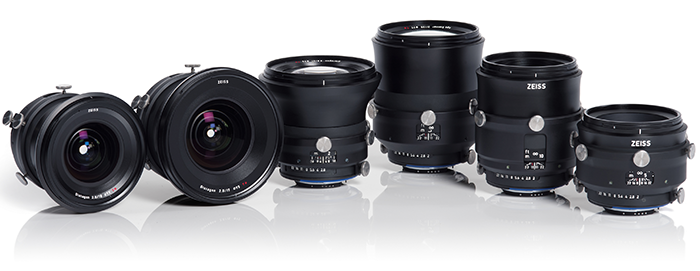
Sony A6500 vs A6300 size comparison (A6500 has a bigger grip)

via Camerasize.
The Sony A6500 has almost the exact same dimensions as the A6300. One notable difference is the larger grip of the new camera (4,5mm deeper). And here is the difference shown by Photosku:
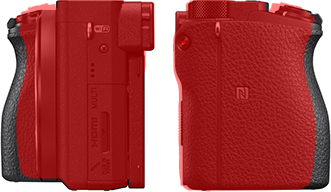

Preorders (Start on October 10 at 11am NYC time):
A6500 at BHphoto, Amazon, Adorama.
RX100m5 at BHphoto, Amazon, Adorama.
Sony 50mm FE macro review by ePhotozine: “excellent performer and a pleasure to use”
ePhotozine tested the new Sony 50mm f/2.8 macro lens and writes:
“There is no doubt that handling is excellent. Focus locks on reliably, the image in the viewfinder or on the monitor is clear and it is a pleasure to enjoy again the simplicity of just having that one standard lens to shoot with.
Sharpness at the centre is simply excellent at all apertures.
Despite only having 7 diaphragm blades, the bokeh is still very pleasing.
The 50mm lens is a universally useful optic and the ability to continue to focus right down to life size is very appealing indeed. The Sony FE 50mm f/2.8 macro lens is an excellent performer and a pleasure to use, at a realistic price.”
The new Sony FE 50mm macro lens is in Stock and shipping for the first time:
in USA at BHphoto, Adorama and Amazon.
in Europ at Fotomundus, Amazon.de, Amazon UK.
New A6500 hands-on reports and new interviews with Sony managers
Above you can watch an Interview with Sony manager Mark Weir. Right below the interview with Kento:
Hands-on and in-depth with the Sony a6500 by Dpreview.
Sony A6500 preview preview by CameraLabs:
“I can see how existing A6300 owners may be frustrated it’s arrived so soon after this model, but as we know, Sony doesn’t hold back on new releases and the A6500 is pitched at a higher level than the A6300 and at a higher price too. I’d love to hear your thoughts.”
Sony RX100 V preview by CameraLabs.
Sony Releases New A6500 Mirrorless Camera and RX100 V Compact (ALC).
The 10 Main Differences Between the Sony a6300 and a6500 (Mirrorlesscomparison).
Sony’s Fast & Furious Hardware Updates Vs. Fuji’s Kaizen Firmware (Fujirumors).
Sony RX100 Mark V: The Fastest Production Still Camera on Earth (Patrick Murphy-Racey).
Preorders (Start on October 10 at 11am NYC time):
A6500 at BHphoto, Amazon, Adorama.
RX100m5 at BHphoto, Amazon, Adorama.
New Underwater housing for all RX100 cameras at BHphoto, Adorama.
Sony 101 Megapixel sensor tested at dpreview and imaging resource: “It’s stunning and sensational”
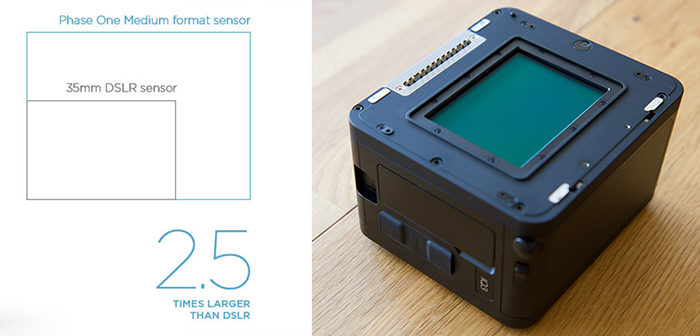
Image of the Sony 101MP sensor by Exclusivearchitecture
–
Sony conquered the medium format world with their new CMOS medium format sensor. The biggest sensor is the new 54x40mm 101 Megapixel sensor which is also a referred as to be a true Full Frame Medium format. Unlike the one used by the Hasselblad X1D and Fuji GFX which do use a smaller44x33mm sensor.
The new Sonys ensor has a 2.5 larger area than Full Frame. And the question is…does it really make a difference? Well both Dpreview and Imaging Resource posted a first review of the Phase One IQ3 back with the Sony 101MP sensor. And that’s what they say:
Dpreview writes the performance is “sensational”:
- The amount of detail it can capture is astonishing, but what I appreciated more was the 3D quality that so many pixels dedicated to a tonal transition can create
- One of the greatest elements of the back is the dynamic range though, which allows the deepest shadows and the brightest highlights to be recorded in a single frame and made visible (via tonemapping) in the fabulous Capture One software.
- The need for neutral density graduated filters with this camera is greatly reduced, and it is actually quite difficult to get an exposure so wrong that a decent image can’t be produced: just like the days of color negative printing
Imaging Resource writes the performance is “stunning”:
- Holy moly, this camera can capture some insanely detailed photographs! I could pretty much just stop there. The images are incredible.
- I was able to recover tons of detail in the highlights, if I found myself with blown-out, overexposed areas. On the other end, I was also able to lift up the shadows to reveal lots of detail without introducing much noticeable noise.
It is interesting to note that both sites mention that handheld shooting is a challenge mainly caused by the big mirror movement. I can see the market for a mirrorless system camera with such a sensor. Why don’t you do it Sony? :)
